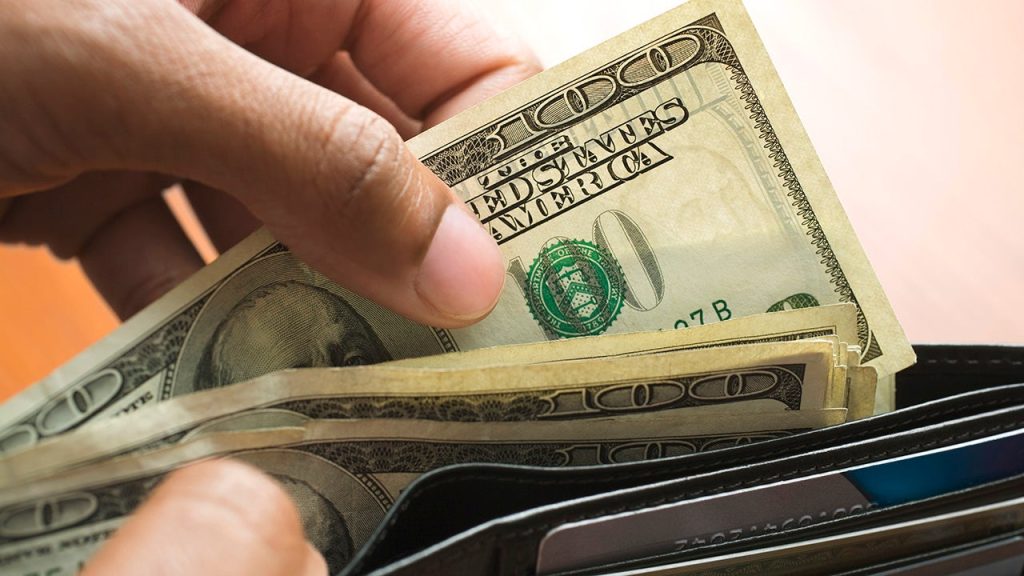Struggling to save an extra $100 each month? You’re not alone.
A 2024 Bankrate survey found that 59 percent of U.S. adults are uncomfortable with their level of emergency savings, while 27 percent have no emergency savings at all. However, building a savings buffer doesn’t have to be daunting.
By making a few small changes to your spending habits, you could accumulate an additional $1,200 per year — simply by saving $100 more each month. Ready to get started? Here are 10 effective tips to help you save $100 a month without drastically altering your lifestyle.
1. Avoid bank fees
Bank fees can quietly eat into your balance if you’re not careful. The average overdraft fee in the U.S. is $27.08, according to our latest checking account survey, and using an out-of-network ATM can set you back $4.77 per transaction.
You could save $50 a month or more by being mindful of common charges. Keep your hard-earned money from going toward unnecessary fees with the following small financial adjustments:
- Set up mobile bank alerts: Many mobile banking apps allow you to receive alerts when your account balance is low or when an upcoming payment is scheduled. This helps you avoid unexpected overdraft fees.
- Stick to in-network ATMs: Use your bank’s mobile app or website to find nearby in-network ATMs or opt for cash back at grocery stores to avoid ATM fees altogether. Alternatively, opt for a bank that offers reimbursement for ATM fees, like Ally Bank.
- Watch out for hidden fees: Monthly maintenance, money transfer and minimum balance fees can add up. Consider switching to a no-fee checking account, many of which are available at online banks.
2. Open a high-yield savings account
Is your savings account offering less than 1 percent interest? If so, you’re missing out on potential earnings. In 2024, many high-yield savings accounts offer annual percentage yields (APYs) of around 5 percent.
To put this in perspective, if you have $10,000 in a standard savings account with an APY of just 0.01 percent, you’d earn only $1 in interest over the year. But if you put that same amount in an account with a 5 percent APY, you’d earn $500. That’s a significant difference, and it can help accelerate your savings.
Online banks like Ally Bank often offer the highest yields due to lower overhead costs. If you’re comfortable with online banking, opening a high-yield savings account could be an easy way to grow your savings faster.
3. Cut down on impulse purchases
Impulse purchases can drain your budget before you even realize it. The next time an unplanned buy tempts you, try these strategies:
- Decide if it’s worth it: Reflecting on your values and needs vs. wants can help to refocus on what brings you the greatest satisfaction.
- Delay gratification: Write down what you want to buy and wait at least 24 hours. Slow shopping helps you decide if it’s something you really need or just a passing desire.
- Make a shopping list: Stick to a pre-written list when shopping to avoid unnecessary splurges.
- Pay with cash: A longtime budgeting strategy, paying only with paper money works because it’s more painful to spend.
- Phone a friend: Commit to report your impulse buys to a trusted accountability partner, even if it’s just a journal. Treat it like an exercise tracker. If you’re ashamed to report it, don’t buy it.
- Skip the cart: If you have to carry all your purchases in your arms as you walk around the store, you’re less likely to buy more.
4. Reduce your energy bill
You can lower your utility bills by making a few energy-efficient changes. According to the U.S. Department of Energy, reducing your energy consumption with energy-efficient upgrades could save you $200 to $400 each year. Here are a few quick wins:
- Switch to LED light bulbs: LEDs use 75 percent less energy than incandescent bulbs.
- Unplug electronics: Devices like TVs and microwaves consume energy even when turned off. Unplug them when not in use.
- Adjust your thermostat: Lowering the temperature by just a few degrees in winter could reduce your heating costs by up to 10 percent.
- Seal leaks: Add spray foam or weather stripping around drafty windows, doors and fireplaces to stop warm air from leaking in during the summer or cold air from entering during the winter.
5. Set up automatic bill payments
Late fees can add up quickly, especially if you’re juggling multiple bills. According to the Consumer Financial Protection Bureau, U.S. households collectively spend over $14 billion each year on credit card late fees alone.
By setting up automatic payments, or auto-pay, you can avoid late fees and may even qualify for discounts. For instance, some student loan servicers offer a 0.25 percent interest rate reduction when you enroll in autopay. Car insurance, internet provider and cell phone company all offer monthly discounts for auto-pay.
To avoid overdrawing your account, monitor your balance regularly or use an account that doesn’t charge overdraft fees.
6. Brew coffee at home
If you’re a regular coffee drinker, buying coffee at a coffee shop every day can cost a lot — about $3 a pop for a basic coffee in Lincoln, Nebraska (and we all know we splurge on flavors and oat milk). Daily brewed coffee made by a barista adds up to over $1,000 annually!
Brewing your own at home could save you at least $500 annually, and that’s just considering the supplies to make it. The savings are even higher when you factor in the gas and vehicle wear and tear required to travel to your favorite coffee shop. While you might still treat yourself to the occasional latte, making coffee at home most of the week can make a huge difference in your monthly savings.
7. Consolidate streaming services
With multiple streaming platforms on the market, it’s easy to overspend on entertainment. U.S. households spend an average of $46 monthly on streaming services like Netflix or Hulu.
Take stock of your subscriptions and decide which ones you need. Consider sharing accounts with family members or roommates to reduce costs. Many services offer premium plans allowing multiple profiles, letting you split the cost. Consolidate your streaming services to save $20 or more each month, or consider using a credit card that offers entertainment rewards, like the Blue Cash Preferred Card from American Express.
8. Use apps to find the lowest gas prices
While average U.S. gas prices have dropped to $3.185 per gallon as of Sept. 2024, (65¢ less than a year ago, according to the U.S. Energy Information Administration), fueling your car still takes a toll on your wallet. J.D. Powers reports that the average American family pays about $5,000 per year on gas — about 2.24 percent of their total monthly income.
Tools like GasBuddy and Waze can help you locate the cheapest gas stations near you. GasBuddy even offers a trip cost calculator, so you can estimate how much fuel you’ll need for a road trip.
Also, filling up on Mondays or Fridays, when gas prices tend to be lower, can save you a few extra dollars each week. These small savings can add up to more than $100 a year.
For even more savings, use a cash-back rewards app like Upside to help you save on gas.
9. Shop smarter for groceries
Switching to generic or store-brand items can save you an average of 40 percent on your grocery bill, Forbes reports. Take advantage of discounts, coupons and browser extensions like Honey or Rakuten, which can automatically apply coupon codes and find deals when shopping online.
To make your savings even sweeter, don’t shop when you’re hungry, avoid pre-packaged items and buy whole produce (vs. precut) and bulk items whenever possible.
10. Tackle your debts
Paying off high-interest debt, such as credit cards, can free up more of your income for savings. According to a 2024 Bankrate Credit Card Debt Report, 36 percent of U.S. consumers have more credit card debt than emergency savings.
Consider using the snowball or avalanche method to pay down debts. By strategically paying off your debts, you may reduce the amount of interest you pay over time and free up more cash to put toward savings.
The bottom line
Building up your savings doesn’t require major sacrifices. By taking a few proactive steps — like curbing impulse purchases, consolidating subscriptions and reducing energy use — you can start saving an extra $100 or more each month.
Over time, these small changes will help you build a financial safety net, giving you peace of mind and greater financial security. Remember — it’s not about perfection. It’s about consistency and habits that compound over time.
Read the full article here










